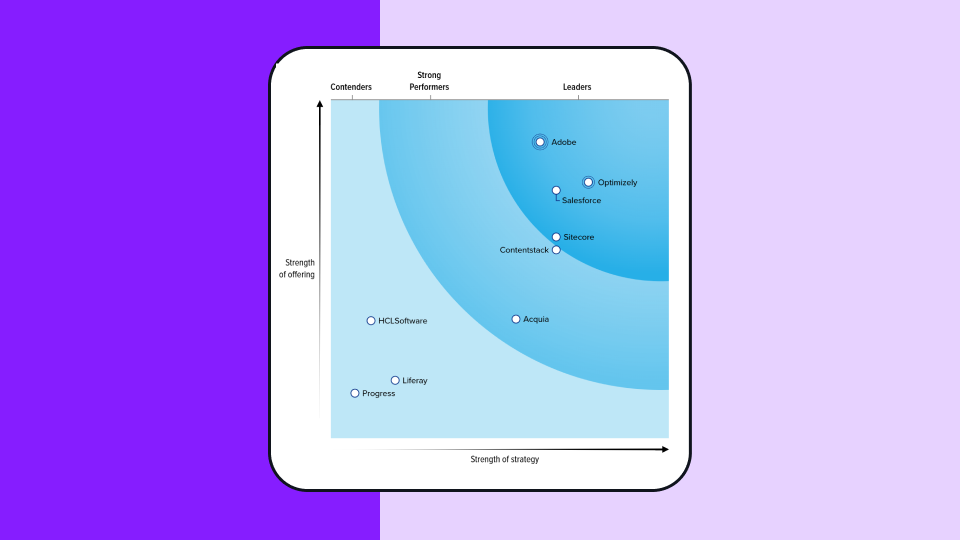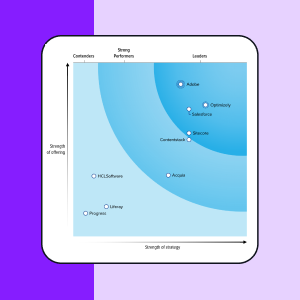Customer journey analytics
What is customer journey analytics?
Customer journey analytics is the process of analyzing customer interactions across every touchpoint to understand their complete experience and its impact on business outcomes.
Unlike traditional web analytics that focus on individual sessions, customer journey analytics examines the entire sequence of interactions a customer has with your brand. It includes awareness through retention and advocacy to understand what drives conversions, retention, and revenue by connecting behavior across multiple touchpoints to reveal patterns that predict business outcomes.
However, most teams analyze customer journeys with fragmented data. Marketing attribution lives in one tool, product usage sits in another, support interactions are trapped in a third. When behavioral data lives in silos, even smart teams struggle with questions like: "Which onboarding flow produces the highest lifetime value customers?"
And these are the questions you can answer with warehouse-native customer journey analytics. Here's how.
Understanding the customer journey
Every customer follows a path through these key stages:
- Awareness: Customers discover problems and search for solutions through content, ads, social media, or referrals.
- Consideration: Customers evaluate options by comparing features, reading reviews, and gathering information.
- Decision: Customers choose solutions and begin purchasing, often involving sales conversations or trials.
- Purchase: Transaction completion, including onboarding and initial setup.
- Retention: Regular product usage and ongoing value evaluation.
- Advocacy: Satisfied customers recommend through reviews, referrals, or social sharing.
Each stage contains multiple touchpoints: Website visits, email opens, product interactions, support conversations, social media engagement, and offline experiences.
Common journey analysis, methodologies:
- Cohort analysis: Grouping customers by shared characteristics or timeframes to understand how journey patterns evolve and which behaviors predict success.
- Funnel analysis: Examining conversion rates between journey stages to identify bottlenecks and optimization opportunities.
- Path analysis: Mapping actual customer routes through touchpoints to discover common patterns and unexpected behaviors.
- Attribution modeling: Determining how different touchpoints contribute to conversions and assigning appropriate credit across the journey.
- Segmentation analysis: Dividing customers into groups based on journey behavior to enable targeted optimization strategies.
Why customer journey mapping is crucial
Customer journey mapping provides the foundation for analytics by identifying:
- All possible customer touchpoints across channels
- Emotional states and pain points at each stage
- Handoffs between departments and systems
- Opportunities for experience improvement
Without mapping, analytics efforts miss critical touchpoints and optimization opportunities. However, traditional approaches create incomplete pictures:
- Marketing teams track attribution in Google Analytics or marketing automation platforms
- Product teams monitor usage in different analytics tools
- Customer success tracks interactions in CRM systems like Salesforce
- Sales teams manage pipeline data in separate platforms
This fragmented approach creates critical problems:
- Incomplete customer stories: Teams see declining feature usage as negative but miss that those users contacted support multiple times and became power users driving expansion revenue. The journey insight that supports interactions to predict higher engagement gets lost in data silos.
- Resource waste on manual analysis: Data scientists spend 4-8 hours generating dashboards that should take minutes, writing custom code because experimentation metrics live in warehouses while behavioral data lives elsewhere.
- Delayed business decisions: Product managers make roadmap choices without current customer data because accessing warehouse insights requires analyst intervention.
It is why you need a warehouse-native architecture for your analytics. It's an approach where queries and insights are drawn directly from a data warehouse itself, eliminating the need for data extraction and transference into separate systems.
The power of customer journey analytics
Six essential customer journey analytics metrics to track:
-
Time to conversion: How long customers take to move through journey stages, broken down by acquisition source and customer characteristics.
-
Customer lifetime value by journey path: Comparing CLV across different journey patterns to identify the most valuable customer acquisition and engagement strategies.
-
Churn rate by journey stage: Understanding where and when customers are most likely to disengage, enabling targeted retention efforts.
-
Conversion rate by touchpoint: Measuring how individual interactions contribute to overall journey progression and business outcomes.
-
Engagement depth: Tracking how deeply customers engage with different touchpoints and how engagement correlates with journey advancement.
-
Cross-channel attribution: Understanding how touchpoints across different channels work together to drive conversions and customer value.
Tracking the right metrics gives you a lot of benefits. Here are five benefits of customer journey analytics:
- Identifying friction points: Analytics reveal where customers struggle or abandon their journey. High drop-off rates between specific stages indicate process problems requiring immediate attention.
- Understanding drop-offs: Detailed analysis shows not just where customers leave, but why. Combining behavior data with customer feedback explains abandonment patterns.
- Personalizing experiences: Journey data enables dynamic personalization based on customer stage, behavior patterns, and predicted next actions.
- Improving conversion rates: Understanding successful customer paths allows replication of high-converting journey patterns across similar customer segments.
- Increasing retention: Early warning signals from journey analytics predict churn risk before customers disengage, enabling proactive intervention.
Implementing customer journey analytics
Successful customer journey management requires data from multiple sources:
- Web and mobile analytics: Page views, feature usage, conversion events, and user flow patterns from websites and applications.
- CRM systems: Lead information, sales interactions, deal progression, and customer relationship history.
- Marketing automation: Email engagement, campaign responses, content consumption, and lead nurturing activities.
- Customer support: Ticket history, resolution patterns, satisfaction scores, and support channel preferences.
- Social media: Brand mentions, engagement rates, and social customer service interactions.
- Offline touchpoints: Store visits, phone calls, event attendance, and direct mail responses.
Tools and technologies:
- Customer Data Platforms (CDPs): Unify customer data from multiple sources to create comprehensive customer profiles and enable real-time personalization.
- Warehouse-native analytics: Advanced platforms that operate directly on unified warehouse data, eliminating data movement and providing complete customer context. These enable AI-powered analysis accessible to business users without SQL expertise.
- Visualization tools: Dashboard and reporting platforms that make journey data accessible to business users and enable quick insight discovery.
- Traditional customer journey analytics platforms: Point solutions that analyze exported data subsets, often requiring manual integration and creating data silos.
The key difference is that warehouse-native approaches provide complete business context while traditional platforms work with fragmented data exports.
Getting started with customer journey analytics
Most organizations begin with mapping their current customer journey, then implement analytics to measure and optimize each stage.
- Start with high-impact use cases: Identify the business questions requiring most analyst time or having highest business impact. Focus on time-sensitive decisions like campaign optimization, product feature analysis, and customer behavior exploration.
- Enable self-service capabilities: AI-powered platforms allow business users to explore journey data without technical barriers, reducing dependence on analyst resources.
Next is measuring ROI of customer journey optimization. Here's what to keep in mind:
- Customer lifetime value improvement: Track how journey optimizations impact long-term customer value and revenue generation.
- Conversion rate enhancement: Measure improvements in stage-to-stage conversion rates after implementing journey optimizations.
- Customer acquisition cost reduction: Understand how better journey experiences reduce the cost of acquiring and converting customers.
- Retention and loyalty metrics: Monitor how journey improvements affect customer satisfaction, retention rates, and advocacy behaviors.
- Time to value: Measure how quickly customers achieve meaningful outcomes after journey optimization implementations.
Optimizing customer journeys for business impact
Three parts:
Part 1: Experimentation-informed optimization
Through hypothesis generation, complete journey context reveals which touchpoints need testing. It'll help you connect experiment results to customer lifetime value and revenue impact, not just engagement metrics.
Part 2: Stage-wise optimization
Start by concentrating efforts on decision and retention phases for highest impact potential. Then match messaging to customer needs, including educational content for prospects, demos for evaluators, advanced workflows for users.
Use journey signals to trigger outreach when customers show disengagement signs. Finally, optimize interaction timing to guide customers naturally toward conversion.
Step 3: Personalization at scale
Customize experiences based on customer progress and behavioral patterns. Maintain coherent experiences across all touchpoints while respecting channel preferences. Use data to adjust content and offers as customers move through their journey.
To help you get started, Optimizely connects website behavior, product usage, experimentation results, and revenue data in a single platform—eliminating fragmented analysis.
Now, you can tie revenue impact to specific products and updates. You can create cohorts of our top revenue-producing customers and see where they spend the most time.
Wrapping up...
Modern customer journey analytics transforms customer understanding from guesswork to precision, enabling organizations to optimize experiences based on what drives business outcomes rather than assumptions about customer behavior.
Success comes from connecting journey insights to business outcomes, not just tracking customer behavior. The goal is optimization that drives measurable improvements in conversion, retention, and customer lifetime value.
You can do all of this with Optimizely Analytics.

